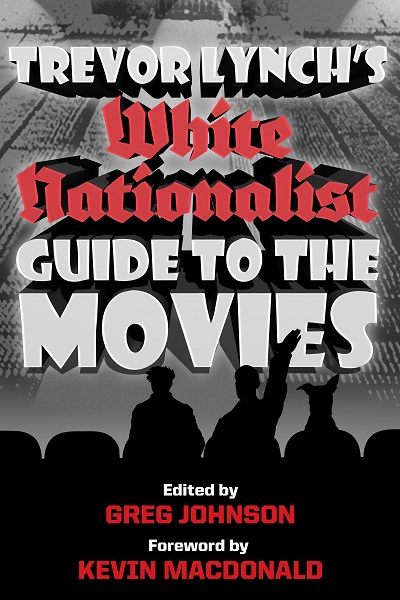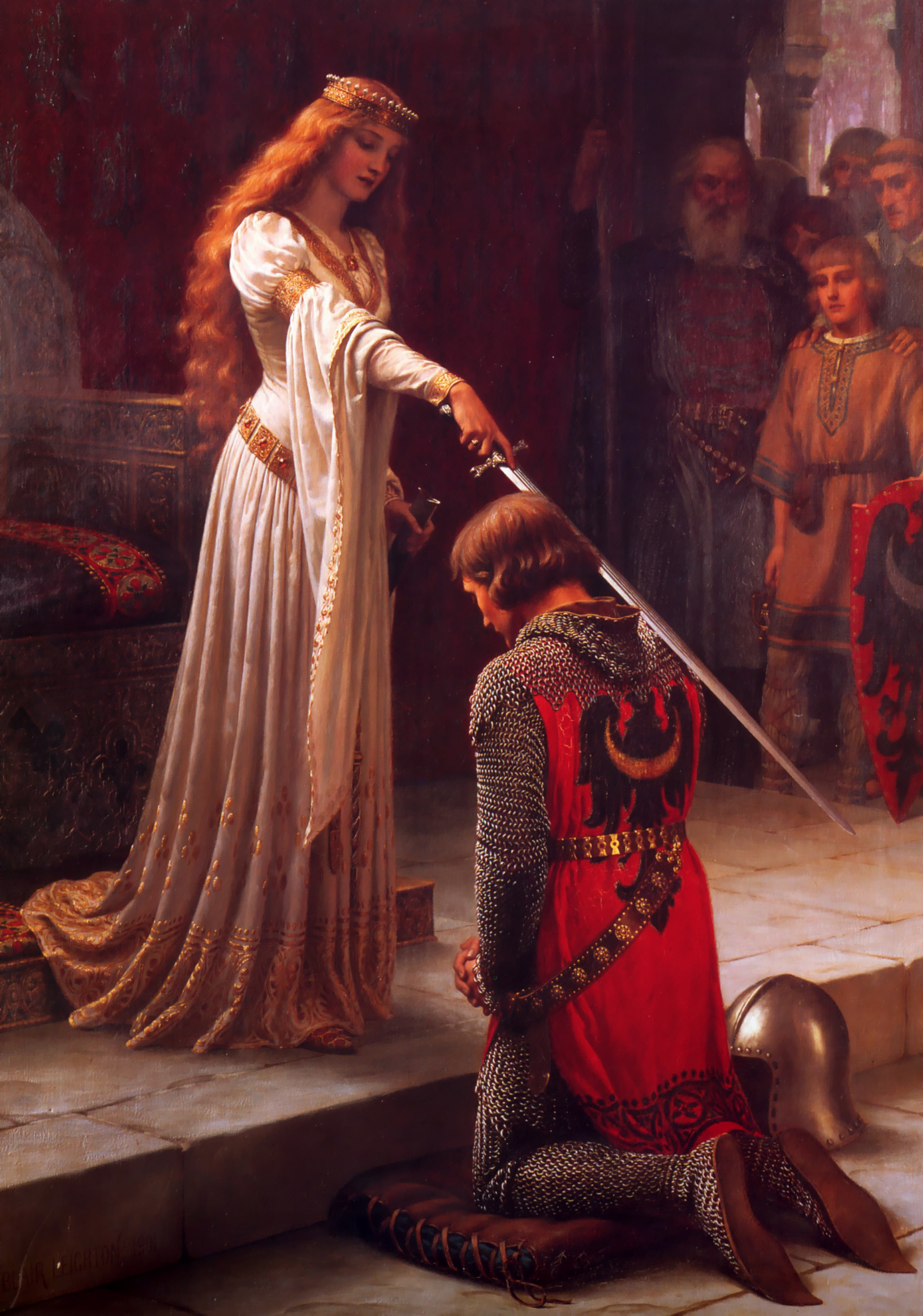by Harold Covington
“ Comes The Dawn”

“The Battle Hymn I can see,” responded Posner. “Congressman Rollins, er, General Rollins I mean, is trying to expand his base beyond the South Side of Chicago, and that means appealing to the blue-haired country club set in both parties. Very symbolic and American and all that, and of course the fact that Roland is the descendant of slaves who were freed in the war the song was written to glorify will add a bit of poignancy. Okay, that part I get. But has anyone seriously tried to talk him out of the MacArthur impersonation with the hat and the shades and the corncob pipe? Does he really not understand that he will be making himself look damned ridiculous? Anyway, it’s been done before.”
“Like most Americans will even remember who Douglas MacArthur was,” snorted Hastings. “Most of our wonderful viewers have difficulty remembering what they had for breakfast yesterday.”
“That’s Rolly’s whole life,” said Sue with a shrug. “He’s always been out to prove that anything a white man can do, a black man can do better and Rolly Rollins can do better still. It’s gotten him re-elected for six terms in Chicago, until he resigned to take over FATPO [Federal Anti-Terrorist Police Organization]. Now he wants to add anti-racist war hero to his resumé.”
“This is not a war, Ms. Loomis,” Posner corrected her. “This is a law enforcement action against hate criminals.”
♣
“No, those assholes have no idea we know they’re coming.” Zack made it a point to sound a lot more confident than he felt. “I was in Iraq, God damn it all, and I’ve seen what happens when anybody tries that shit! We’re guerrillas, remember? If we go head on against the Americans we’ll be wiped out and lose everything we’ve spent years building here! We’re trying to free our people and create a new country, not go to Paradise with seventy virgins, and not play Rambo! One driver per team who knows where the vehicle is parked, and he or she stays with that team and guides them back to the vehicle when we disperse, which we’ll have to do fast, because we’re going to have helicopter gunships chasing us.”
“They think this is Iraq in 2003,” said Len.
“Why should they?” asked Washburn flatly. “Until three years ago, white men never resisted before. I still don’t think they can wrap their minds around it. When the shit hits the fan, kill those media lice. All of them.” He got a brief chorus of “Roger that.”
♣
The sea wind tousled his hair, he looked rugged and relaxed, and his voice was deep and authoritative. “I am standing here on a deserted beach somewhere on the Oregon coast, where in a few minutes General Roland Rollins, officer commanding of the Federal Anti-Terrorist Police Organization, will be landing with a large force of highly trained and motivated men and women who are determined to take a big bite out of racist terror today. In a stunning and daring move, General Rollins has taken to the high seas in a brilliant flanking movement in order to insert some major American muscle right into the heart of NVA [Northwest Volunteer Army] bandit country, a part of the United States that has seen little law and less order for the past several years. It’s a part of our country where people of color, Latino people, gay people, and anyone whose heart isn’t filled with hate have been afraid to set foot for a long time.”
While the media party waited idly for the fast approaching Ventura, Seth Goldstein was growing increasingly uncomfortable. “Hey man, I got to drain the snake,” he said to Hastings. “If I take a whizz in the surf here will you promise not to film it?”
“No promises,” laughed Hastings. “We are already working on our outtakes and bloopers reel for this shoot. Go up behind the dunes.”
On the bridge of the Higby Lieutenant JG Day told Executive Officer Lieutenant Hacker, “One of the shore party is leaving the group, sir.”
Goldstein trudged up the apparently empty beach toward the roadway, looking for a nice concealed spot to urinate where his merry colleagues wouldn’t film him and preserve it for the ages. He saw a low rise of sand and sea oats at the base of the right-hand berm that looked promising. He reached the mound, unzipped his trousers and unlimbered his circumcised schwanze, and stepped around the mound of sea oats preparatory to emptying his bladder.
One of the men slapped his hand over Seth’s mouth and the third grabbed and pinioned his arms. Goldstein tried to shriek in pain and terror. He recognized Hatfield, who leaned over him, studying Goldstein’s camel face, his acned skin and fleshy nose and frizzy hair. “A Jew,” Hatfield said. Hatfield leaned over and cupped Goldstein’s roundhead in his hands, and whispered the single word “Dresden!” in his ear before snapping his necklike a pretzel.
“Great, now we have to stand on a dead Jew with shit in his pants,” groused Charlie.
♣
Charlie Washburn stared at this apparition through his binoculars. “What on earth? Is that Idi Amin or Douglas MacArthur?” he asked, fascinated.
Rollins strode forth energetically through the surf, which reached up to his knees as he stepped off the ramp. His FATPO escorts slogged soggily along with him on either side. The rousing chorus of The Battle Hymn of the Republic thundered overhead. “Ready!” snapped Hatfield into the radio. To the surprise of both Ekstrom and Washburn, Hatfield stepped up out of the dug out and walked several paces toward the beach, upright, totally visible.
Higher up on Sunset Beach, Zack Hatfield raised his radio to his lips and shouted into the handset the command to fire. “Freedom!”
200 million viewers around the globe saw the body of Roland Rollins torn to pieces as five .50-caliber slugs smashed into him, and sent him twirling and whirling head over heels high into the air like a popped balloon, knocking him into the sea where he floated like a sack of gaudy, dirty laundry.
♣
Roland Rollins died at 5:45 a.m. exactly, or 0545 hours to use military time, just as the golden sunrise flooded the beach with glowing amber light. Among the 200 million viewers who saw him die were Captain Meryl Sandoval and Lieutenant Donald Hacker, who were monitoring the raw feed transmission on the bridge of the Higby. Both of them stared at the screen as Rollins whirled away into the air flapping like a scarecrow in the wind.
0548 hours: On the beach most of the media party had gone down in the first hail of NVA bullets, as per Hatfield’s orders, and were now either lying very still on the sand in sodden red puddles or crawling along blindly like squashed and bleeding beetles.
Leonard Posner, to give him fair due, died while trying to do his job. He jerked the camera back up into a standing position on its tripod, leveled it and made sure it was on, and then stepped in front of it with a microphone, his face ghastly. “This is Leonard Posner on Sunset Beach in Oregon. Just now the world was shocked and horrified to witness the death of General Roland Rollins at the hand of the fascist beasts, who are now firing at the men and women of the FATPO and the S. S. Ventura from entrenched positions along the beach here. Somehow or other we have been lured into a bloody ambush. There are bullets flying all around me, but the brave men and women of FATPO are resisting and preparing to…” The world would never know what Posner claimed the brave men and women of FATPO were about to do, because at that moment a .50-caliber BMG slug decapitated him, and his headless blood-gushing corpse slid down out of the camera’s view like a special effect from a zombie movie.
0550:30 hours: “Madre de Dios, what’s that?” screamed Meryl Sandoval on the bridge of the Higby.
Hacker for once was at a loss for a snappy retort. “I don’t know,” he admitted. “But something big as hell just went up on board Ventura.”
“Captain Mulvaney, do you read?” Hacker spoke urgently into his radio. “Are you all right? What the hell happened, Derek?”
“Damned if I know,” came Mulvaney’s reply, his voice shaky and dazed. “If I didn’t know better I’d say we were torpedoed, or hit a mine. Whatever it was blew the ship’s bow into the air and we landed on our side. We’re listing to port, almost twenty degrees, God damn it!”
♣
“What the hell happened with that gun turret of yours blowing up?” asked Zack curiously. “I don’t think that was us.”
Hacker scowled. “Our bird-brained excuse for a captain was an affirmative action quota promotion, a mami who couldn’t sail a rubber duck in a bathtub.”

http://northwestfront.org/




